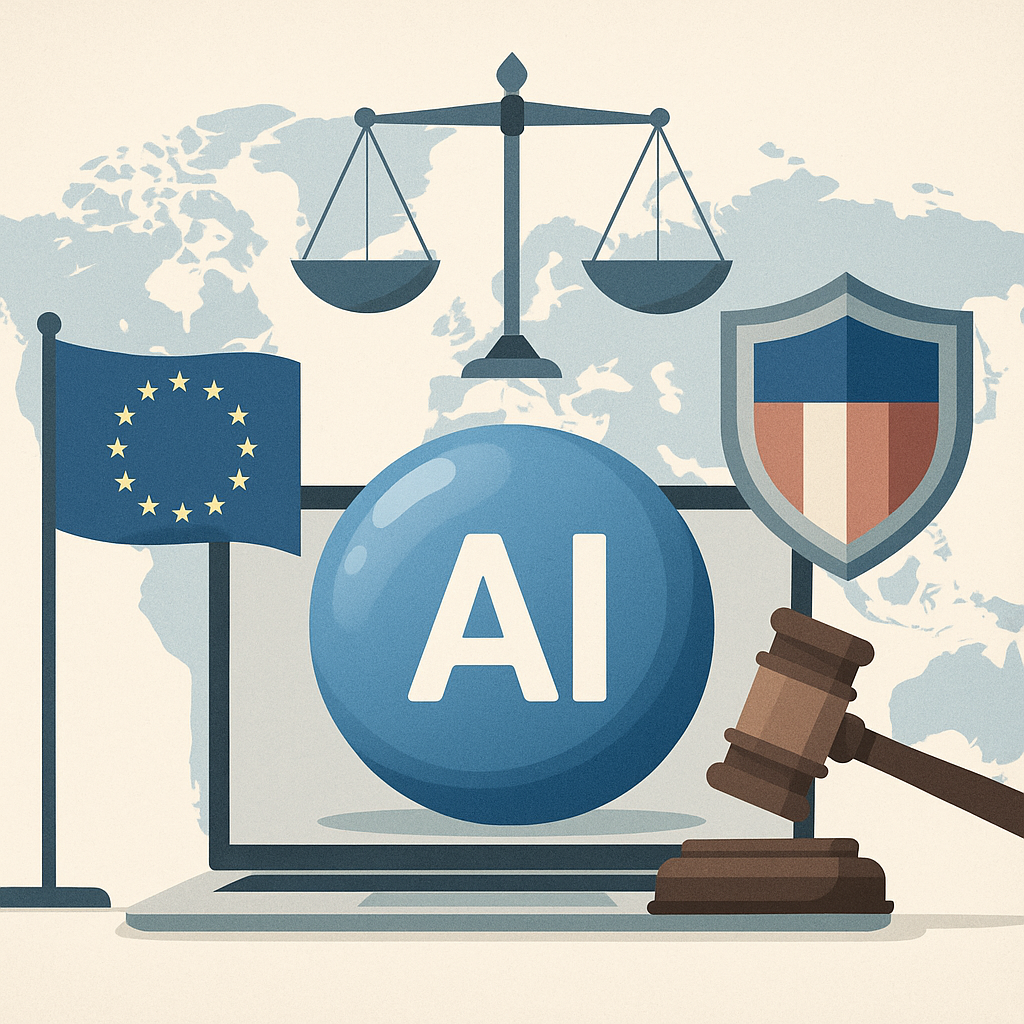Hello, I’m Mana.
This time, let’s talk about “Generative AI and Regulations.”
As generative AI continues to spread as a powerful tool, discussions around “how to regulate its usage” are becoming increasingly active worldwide.
Each country approaches AI regulation differently. Understanding these differences is important for using AI responsibly in a globalized world.
🌍 Why Are Country-Specific Regulations Necessary?
While generative AI allows anyone to easily create information, it also carries risks such as:
- Spreading misinformation and fake news
- Copyright infringement and privacy issues
- Reinforcing biases and discriminatory outputs
To minimize these risks while promoting the benefits of AI, many countries are developing their own regulations and guidelines.
🇪🇺 EU: Leading the Way with the “AI Act”
In 2024, the EU finalized the AI Act — the world’s first comprehensive law regulating AI.
One unique aspect is the risk-based approach, categorizing AI by usage and potential risk:
- Unacceptable Risk: Completely banned (e.g., social scoring systems)
- High Risk: Strict requirements (e.g., healthcare, education, employment)
- Limited Risk: Mandatory transparency (e.g., chatbots)
- Minimal Risk: Generally free use
For generative AI specifically, there are additional proposed rules such as:
- Clearly labeling AI-generated content
- Disclosing the use of copyrighted materials in training data
🇺🇸 USA: Self-Regulation Plus Government Guidelines
In the United States, freedom for business innovation is prioritized, and there is currently no comprehensive AI regulation like the EU’s AI Act.
However, in 2023, the Biden administration issued an AI Executive Order outlining:
- Requiring AI developers to ensure transparency and safety
- Strengthening efforts against bias and misinformation
- Establishing guidelines for federal government AI use
Most companies like OpenAI and Google are voluntarily implementing safety measures based on these principles.
🇨🇳 China: Strict Pre-Screening and Real-Name Systems
China has quickly introduced strict regulations for generative AI.
- Content must not conflict with socialist values
- Real-name registration is required for users
- Severe penalties for violations
China’s tight information control is reflected in its strong measures against AI’s information-dissemination capabilities.
🇯🇵 Japan: Soft Guidelines for Now
Japan currently has no legally binding AI regulations.
Instead, the government has established principles and voluntary guidelines, mainly led by ministries such as METI and the Cabinet Office:
- Best practices for AI development, deployment, and usage
- Ensuring safety, privacy, and accountability
- Encouraging companies to develop their own internal rules
However, Japan is likely to strengthen its regulations in the future, in line with global trends.
📘 Final Thoughts
As generative AI becomes more powerful, debates around “how freely it should be used” and “how society should be protected” are becoming more important.
Understanding the differences in national approaches gives us a more global perspective and helps promote responsible AI usage across borders.
Let’s keep learning and growing together, making AI a safe and powerful partner for the future! 📘



Comment